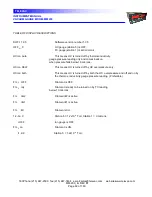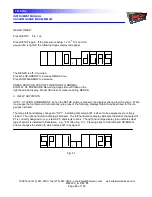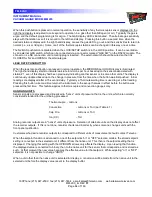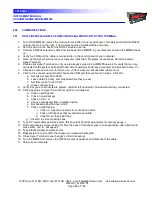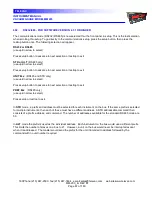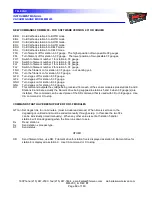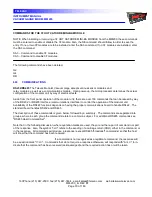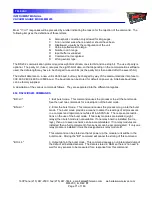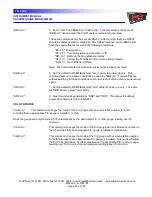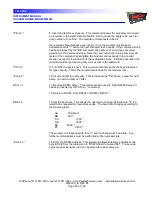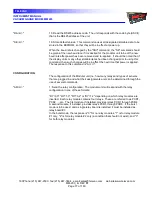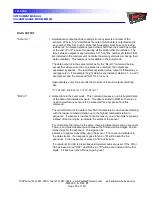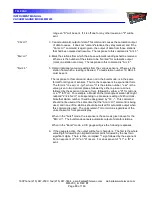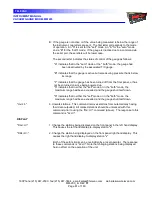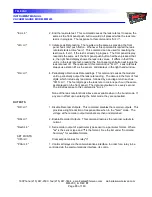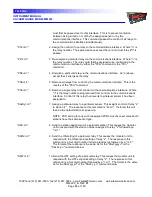
INSTRUMENT MANUAL
VACUUM GAUGE MODEL MM200
160Phone:(215) 947-2500 fax:(215) 947-7464 e-mail:sales@televac.com web site:www.televac.com
MM-200_im REV M
Page 72 of 160
TELEVAC
The normal format of the data is four ASCII characters for each sensor starting
with the lowest numbered station up to the highest numbered station in sequence.
If a sensor is inactive for some reason, one or two letters are sent, instead of the
four digits, to indicate the status of the sensor.
For all sensors the format is the same, three significant digits and an exponent.
There is an implied decimal point between the first and second digits, and an
implied sign for the exponent. The sign can be positive or negative depending
upon the sensor. There are no delimiters in the data stream. If an exponent goes
to ten an "A" will be sent for the exponent. For an exponent of eleven, a "B" will be
sent.
If a resident 3D or 3E is present several special codes are used. If the 3D or 3E
has been turned "OFF" via RS232, an "R" will be sent instead of the four digits. If
it has been shut off due to going over range an "S" will be sent. If it is off due for
any other reason an "F" will be sent.
"BRE<cr>"
4. Set to "burst" and RS485 with presets and "even" parity. This command presets
several conditions and then goes to the RS485 mode. It is useful in applications
where optimum conditions are required for rapid output of data from many sensors.
It is equivalent to the following series of commands:
"BE<cr>" Blank echo.
"AD<cr>" Add delay of 2 milliseconds to RS485 response.
"FI<cr>" Inhibit certain front panel operations.
"CA<cr>" Cancel auto output of data.
"EL<cr>" End leak rate test.
"AT<cr>" Add time out to command bytes.
"CP<cr>" Clear the password.
"BN<cr>" Go to burst mode.
"PE<cr>" Test and generate "even" parity.
"G4<cr>" Go to RS485 interface.



